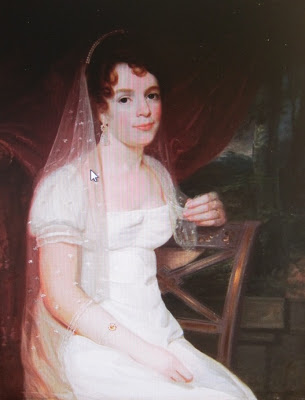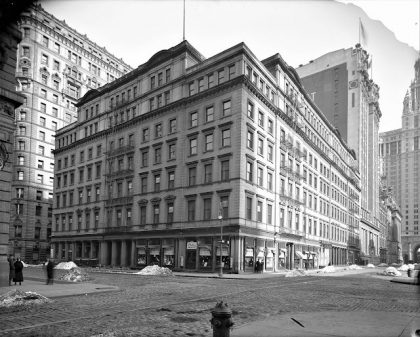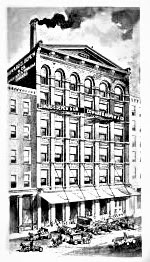If these walls could talk…
The History of Tribeca Buildings database—compiled from Tom Miller’s posts at Daytonian in Manhattan—has six more entries on the properties below. (Click the address to read the full text.) If you enjoy these, and you will, then you should definitely check out his website, which also has write-ups about buildings all over the island. And don’t miss his book, Seeking New York: The Stories Behind the Historic Architecture of Manhattan—One Building at a Time.
··················
67 GREENWICH
For the pedestrian passing the corner of Greenwich Street and Edgar Street in 2010, it was difficult if not impossible to imagine that the old gray-painted brick building with roll-down security gates and metal signs was once among the proudest Federal mansions in Manhattan.Before long graceful brick mansions lined the street, creating one of the most fashionable residential areas in the city. Wealthy merchant Robert Dickey spent $11,017 on three lots in 1809 and by November construction was underway on two houses at Nos. 69 and 71. Dickey dealt in imported goods including tea, spices, coffee rice and “Japan wood.”
…………………….
280 BROADWAY
Alexander Turney Stewart started business in 1823 with a small lace and linens shop in half a store in a little wooden building at No. 283 Broadway, between Church and Reade Streets. He had a sleeping room in the rear. The Irish immigrant possessed a genius for marketing–he came up with the concept of a department store, recognized the value of customer service rather than overcharging the buyer, and would later develop the idea of mail order business. In his 1884 History of New York City, Benson J. Lossing wrote “Mr. Stewart, by great commercial sagacity and operating upon a cash basis, had accumulated a fortune sufficient to enable him to purchase Washington Hall, which had been used for many years as a hotel.”
…………………….
14-16 HARRISON
Born in Germany in 1846, Henry Heide immigrated to America at the age of 20, just after the end of the Civil War. After briefly running a grocery store he found his true calling–making candy. In 1868 he founded the Henry Heide Candy Company. The firm obtained a patent in 1875 for a “new and improved preserve composition for macaroons.” Heide’s almond paste would be touted as “the finest article ever invented for macaroons and general baking purposes” by Illustrated New York in 1888. On April 29, 1881 Heide purchased the two wooden houses at Nos. 14 and 16 Harrison Street from Aymar Embury. He paid $15,500 for the properties–about $380,000 today.
















